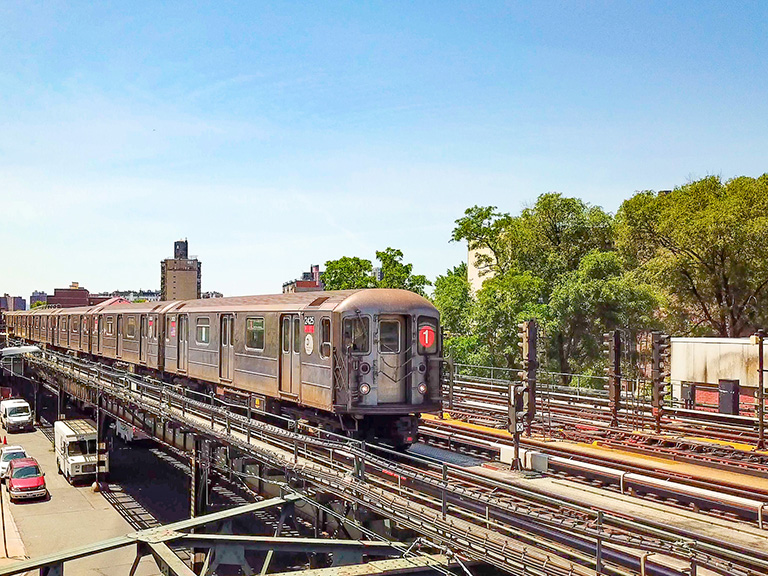 Subway delays in New York City have been frustrating passengers on their morning commutes for decades.
Subway delays in New York City have been frustrating passengers on their morning commutes for decades.
Evangelia Ieronymaki, Ph.D., an assistant professor of civil and environmental engineering at Manhattan College, and Cara Cao ’20, a civil engineering major, have been using predictive models to establish how human behavior causes subway delays. Their data focused on tracking how often individuals hold the subway doors and those effects on arrival times.
The project idea came to Ieronymaki when she was waiting for the subway, watching passengers delay the train by blocking the doors. “I saw a problem and I wanted to investigate it,” Ieronymaki said of her days on the 1 train. “Everyone in New York City can relate to this. I wanted to see if the data was quantifiable.”
Summer Research on the 1 Line
Three days a week in the spring and summer of 2019, Cao monitored commuter and train activity, spending two to three hours each day at different stops along the 1 train route that runs from Manhattan College to South Ferry at the southern end of Manhattan.
In order to produce sufficient data, Cao would travel to the 191st, 116th, 50th and 42nd street subway stops on the 1 train. The 116th and 42nd Street stations served as high-traffic areas, while the 191st and 50th Street stops provided lower volume samples.
“I sat and watched how people interacted with the train. I watched how the train would react to human behavior and how often people would hold the doors of the train,” Cao explained. “To further investigate the problem, I spoke to subway conductors to understand the train cars better.”
What the Data Showed
Their data was then analyzed using predictive models in collaboration with Matthew Volovski, Ph.D., an assistant professor of civil engineering, and John-Paul O’Loughlin ’18 ’20 (M.S.). Their results naturally confirmed that holding the subway door for other passengers has a compounding effect on the overall delay of the subway. What they may not have been able to predict was how much of a delay that holding doors caused.
The data showed that there was a 1.3% delay in the projected timing of the train from individuals holding the subway doors. And if the train was delayed by more than two seconds, the overall delay was increased by an additional three seconds on average. If the subway doors were held for less than two seconds, this would make the train leave 1.8 seconds faster than it normally does.
When looking at these findings, Ieronymaki feels that their research can change the way the MTA operates. “With this data on how human behavior affects delays, the MTA could schedule train rides more effectively,” Ieronymaki said. “They could also potentially increase the frequency of trains or fix technical issues that occur when someone holds the door.”
Next Stop?
On January 13, Ieronymaki and Cao presented their research at the annual Transportation Research Board at the Walter E. Washington Convention Center, in Washington, D.C. The meeting, known as the world's largest transportation research conference, covers all transportation issues, with 5,000 presentations in more than 800 sessions.
To Ieronymaki, there is still more work to do for this research to develop. “We can investigate different trains at different times of the year and track more subway stops,” she says. That additional data will give the researchers a clearer picture of train speeds and potentially assist NYC Transit decision makers and commuters alike.
What’s the next stop for the Manhattan College team? The A train, which covers more than 30 miles from 207th Street in Upper Manhattan to Far Rockaway in Queens.
–by John Dove '18, '20 (MBA)